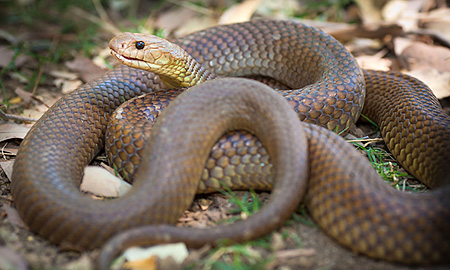Introduction
When it comes to the fascinating world of serpents, few species capture the creative imagination rather like the child tiger snake. Known for their unique coloration and potent poison, these snakes are an essential part of Australia's special ecosystem. In this comprehensive write-up, we will certainly explore different elements of infant tiger serpents, including their behavior, environment, and exactly how to securely interact with them. Whether you're a wild animals lover or simply curious concerning these animals, recognizing child tiger serpents can help cultivate a much deeper recognition for nature.
Baby Tiger Snakes: What You Required to Know About Their Habits and Habitat
What Are Infant Tiger Snakes?
Baby tiger snakes are adolescent forms of the very venomous types known scientifically as Notechis scutatus These snakes are mainly located in coastal regions of Australia, specifically in Tasmania and southern Victoria. As they expand, their pigmentation changes from a much more muted combination to the particular yellow and black bands that give them their name.
One significant aspect of child tiger serpents is their size; hatchlings usually determine around 25-30 centimeters in size. In spite of their little stature, they have an unusual quantity of poison that can be damaging Click for more to humans if bitten.

Physical Characteristics
Tiger serpents possess a number of crucial physical qualities:
- Coloration: The unique banding pattern often comes to be more noticable as they mature. Size: Grownups can reach sizes of approximately 2 meters. Body Shape: They have a robust body that helps in swimming and earthbound movement.
Where Do Baby Tiger Snakes Live? Recognizing Their Habitat
Understanding the environment choices of child tiger serpents is essential for both conservation initiatives and public safety. These serpents prosper in different atmospheres:
- Wetlands: Marshes and swamps provide ample hunting grounds. Coastal Regions: Frequently located near coastlines where they can search for prey. Woodlands: Dense greenery offers cover from predators.
Geographical Distribution
Tiger serpents are predominantly discovered along Australia's southern coastline, including:
- Tasmania: Home to one of one of the most well-known populations. Victoria: Especially in locations near water bodies.
Are Tiger Snakes Venomous? A Deep Dive into Their Venom
One typical concern develops when discussing baby tiger serpents: "Are tiger serpents venomous?" The answer is a resounding yes!
Venom Composition
The poison of tiger serpents includes neurotoxins that can trigger paralysis, coagulopathy (blood clot concerns), and potentially fatality if neglected. Here's what you need to recognize:
- Effects on Humans: An attack from a tiger snake can lead to signs and symptoms like swelling, discomfort at the bite site, nausea or vomiting, and even respiratory failure.
Comparison with Various other Venomous Snakes
In comparison to various other Australian snakes such as the eastern brown serpent or king brown snake, tiger snake venom is considered among one of the most powerful. Nevertheless, casualties are rare because of better clinical treatments and access to antivenom.
Behavioral Patterns of Child Tiger Snakes
Understanding exactly how child tiger serpents act is essential for those that live in or check out areas where these reptiles are prevalent.
Nocturnal Habits
Most infant tiger snakes display nocturnal actions. They often tend to forage for food during cooler evening temperatures. This flexibility assists them prevent predators while boosting their searching efficiency.
Hunting Techniques
Their hunting techniques consist of:

- Ambush Predation: Waiting still until prey comes close. Active Foraging: Actively relocating through greenery or along rivers in search of food.
First Aid for Snake Bites: What You Ought to Know
Despite being interesting animals, experiences with child tiger serpents can lead to harmful scenarios if bites happen. Knowing first aid treatments can conserve lives.
Immediate Steps After a Bite
Remain tranquility; panic increases heart rate. Immobilize the influenced limb making use of a splint or bandage. Seek immediate medical attention-- antivenom may be necessary.Creating a Snake Bite Emergency Treatment Kit
A well-prepared first aid package must include:
|Product|Objective|| ------------------------------|--------------------------------------|| Compression plaster|To immobilize the limb|| Splint|Supports damaged bones or joints|| Antihistamines|Alleviates allergies|| Emergency situation contact numbers|Quick access throughout emergencies|
Common Misconceptions Concerning Tiger Snakes Debunked
Many misconceptions border these interesting reptiles; let's clarify some misconceptions frequently held by people.
Myth # 1: All Tiger Snakes Are Aggressive
While some people may show defensive behaviors when threatened, not all tiger snakes display screen aggressiveness in brown snake baby the direction of humans unless provoked.
Myth # 2: Child Tiger Snakes Are Much Less Harmful Than Adults
This misconception might not be additionally from the fact! Infant tiger serpents have virtually as much venom as grownups relative to their dimension; hence they pose significant dangers if bitten.
FAQs Regarding Baby Tiger Snakes
What do infant tiger snakes eat?- They mostly eat little animals, birds, frogs, and fish.
- Look for slender bodies with faint banding patterns that come to be more pronounced as they mature.
- Yes! Birds of victim and bigger reptiles may target them.
- Typically every few weeks as they grow rapidly throughout their very early life stages.
- While some individuals do keep them unlawfully without licenses due to their hazardous nature; it's normally not advised given their venomous status.
- With punctual medical treatment-- consisting of antivenom-- the survival price is high!
Conclusion
In recap, recognizing baby tiger snakes-- what they consume, where they live, exactly how they act-- can furnish us with useful understanding regarding these amazing yet dangerous creatures. The importance of education surrounding emergency treatment procedures can not be overemphasized; knowing exactly how to react efficiently after a bite could save lives while promoting respect for our slithering next-door neighbors within Australia's abundant biodiversity spectrum.
By valuing these serpents' functions within ecosystems-- and identifying potential hazards-- we promote coexistence rather than fear-based responses towards one another's presence in nature's grand tapestry! Whether you're an enthusiastic hiker pondering your next journey or simply interested concerning regional wildlife experiences near home-- http://edwinawff827.fotosdefrases.com/building-a-diy-snake-bite-first-aid-kit-everything-you-need this overview serves as your relied on recommendation factor on the enigmatic globe lived in by our good friends-- the wonderful baby tiger snake!
